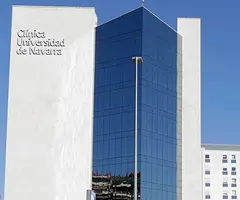Adenoidectomy
"It is advisable to remove the vegetations if they suffer repeated infections, obstruct the back of the nostrils or make it difficult to ventilate the ears".
DR. FRANCISCO JAVIER CERVERA SPECIALIST. OTORHINOLARYNGOLOGY DEPARTMENT

What is adenoidectomy?
Adenoidectomy is the surgical procedure indicated to remove the adenoids. The adenoids, also known as vegetations, are located just behind the nose, inside the face.
Adenoids function as part of the body's immune system, filtering out germs that try to invade the body and helping to develop antibodies against germs.
During the first few years of life they are key to a child's development, but as the years go by the immune system becomes more complete and less important.

When are vegetations removed?
When the inflammation of the vegetations is very large, it can block the passage of air from the nasal cavity to the larynx, so an oral breathing (through the mouth) is performed as a compensation mechanism.
When this occurs, there may be complications, such as otitis, repeat infections of the upper respiratory tract, bronchitis, noisy breathing at night (snoring), etc. In these cases, an adenoid operation is indicated.
Most common symptoms:
- Breathing with your mouth open (especially at night).
- Nasal congestion, with permanent mucus in the nose.
- Frequent ear infections.
Do you have any of these symptoms?
You may need to have an adenoidectomy
How are vegetations removed?
What is adenoid removal surgery like?
Prior to surgery, a complete evaluation of the patient is performed to confirm the indication for adenoidectomy. This includes a detailed physical examination and, in some cases, imaging studies such as a lateral neck x-ray or nasofibroscopy. The goal is to determine the size of the adenoids and the impact they have on the patient's respiratory and hearing function.
Adenoid surgery is a short hospital stay, most often requiring a one-day admission.
Access to the adenoids is through the mouth, without the need for external incisions, which avoids visible scars. The surgeon uses a special instrument to visualize the adenoids, known as an adenoid mirror, or an endoscope if necessary. With the area clearly exposed, the adenoid tissue is removed.
There are several techniques for removal:
- Curettage: This is the classic technique where a curette, a spoon-shaped instrument, is used to scrape and remove the adenoids.
- Microdebrider: It is a device that cuts and suctions the adenoid tissue simultaneously, allowing a more precise control and a clear vision of the surgical field.
- Electrocautery or Cauterization: Uses heat to remove the adenoids and seal the blood vessels, minimizing bleeding.
- Radiofrequency: This technique uses radiofrequency energy to reduce the size of the adenoids in a less invasive manner.
During the procedure, the patient's condition is constantly monitored to ensure stability. After removal of the adenoids, any source of bleeding is controlled. In general, adenoidectomy is a quick procedure, usually lasting between 30 minutes and one hour.
After surgery, the patient is transferred to the recovery room, where he or she is monitored until awakened from anesthesia and ensured that there are no immediate complications.
Results after surgery
The expected result after adenoidectomy is a significant improvement in the patient's quality of life, with a decrease or disappearance of the symptoms associated with enlarged adenoids, such as respiratory problems, recurrent ear infections, and in children, the correction of obstructive sleep apnea.
According to different studies, children who have their tonsils or adenoids removed do not suffer loss of resistance to infections, because other lymphatic tissues of the organism replace the function of the removed ones.
Where do we do it?
IN NAVARRE AND MADRID
The Department of Otolaryngology
of the Clínica Universidad de Navarra
The Department of Otorhinolaryngology of the University of Navarra Clinic is a national and world reference in numerous highly specialized surgical procedures.
We have the latest technology and we perform all diagnostic tests in less than 48 hours in order to offer our patients the best solution in the shortest time possible.
We were one of the first centers in Spain to use robotic surgery in the surgical treatment with the Da Vinci® System.
Organized in specialized units:
- Otology - Hearing.
- Rhinology - Nose.
- Pharyngology - Throat.
- Laryngology - Voice.
- Balance disorders.
- Head and neck problems.

Why at the Clinica?
- Experts in the treatment of hearing problems.
- Pioneers in axillary surgery to avoid scarring.
- National reference center in tissue sealing for tonsil removal.













